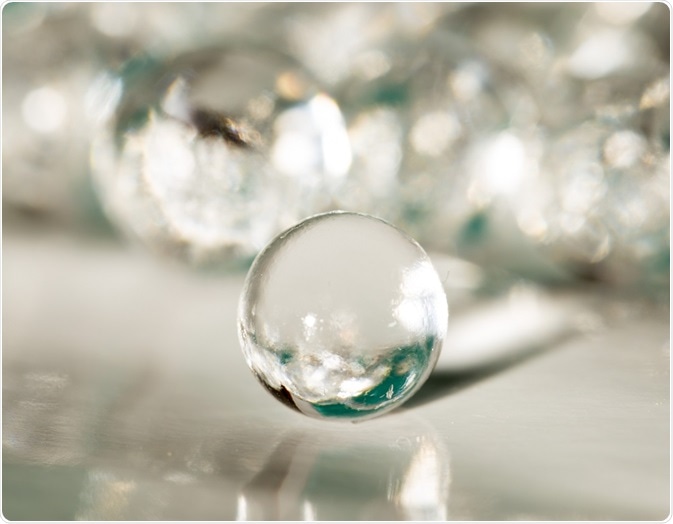Hydrogel dressings are an emerging area for wound care, as they increase the speed and success of wound healing.

Credit: donikz/Shutterstock.com
The success of hydrogel dressings is thought to be due to their ability to maintain an optimum wound healing environment, which is warm and moist, rather than dry whilst keeping out infective agents. They are capable of superseding conventional dressings such as natural or synthetic cotton, lint, and gauze bandages.
Hydrogel dressings are composed of about 90% water suspended in a gel made up of insoluble hydrophilic polymers which swell up on contact with water. They are typically made from polymers of synthetic molecules, such as polymethacrylate and polyvinylpyrrolidine, and some are combined with alginate dressings. They control the exchange of fluid at the wound-bandage interface, with sodium and other molecules in the wound discharge being exchanged for hydrogel compounds.
The hydrogel provides moisture which enables painless debridement of necrotic and infected tissue, promotes granulation and encourages complete healing. Since they have a high water content, they are not completely absorbent, which makes them appropriate for wounds with light to moderate exudation. In other situations, the accumulation of water can result in skin maceration and multiplication of microbes, leading to a foul-smelling infected wound.
Hydrogels may also cool the wound which is helpful in alleviating pain. The gel flattens out the wound surface contours to prevent dead space from becoming infected, besides providing support for surface healing.
Types of hydrogel dressings
Hydrogels are available as sheets or amorphous gels.
Hydrogel sheets
These sheets of polymeric crosslinked molecules are capable of absorbing some water and thus prevent wounds with light exudation from becoming too wet. They are backed by a semipermeable polymer film and the borders may be adhesive, though not always.
The backing regulates evaporation from the dressing and keeps the wound from drying out. The sheets can be cut to size and shape. These dressings may be used as both primary and secondary dressings.
Amorphous hydrogels
The gel flows freely and can enter every crevice of the wound no matter how deep it is. But, it must usually be covered by a bandage of gauze to keep it in place and frequent dressing changes will be required. They are therefore primary dressings.
Impregnated hydrogels
This is formed by dispersing the gel into a gauze/sponge strip or pad, to be applied over the wound and typically covered by a secondary dressing to seal the wound. It can be used to pack deep wounds as well.
Advantages of hydrogels
Hydrogel dressings are in many respects ideal for wound dressings. When applied to dry wounds, as well as sloughing or necrotic wounds, they can make and keep them clean by promoting the removal of infected or necrotic tissue via autolysis.
Hydrogel dressings keep the wound warm, moist, and close. Also, they do not react with or irritate tissue. When applied, they do not adhere to wound surfaces and allow metabolites to pass freely. These dressings help provide a cooling effect on the wound, which makes them very pleasant for patients.
They promote wound reepithelialization as they partially mimic skin structure and encourage the growth of skin components. Also, they can be used to incorporate drugs which enhance wound healing. Lastly, they are suitable for treating all types and stages of wounds except in the presence of heavy exudate , including painful wounds, partial and full-thickness wounds, radiation wounds, minor burns and dry wounds.
Disadvantages of hydrogels
Hydrogels cannot absorb large amounts of fluid and therefore are not suitable for very wet wounds which could become macerated and infected. Also, their low mechanical strength makes them liable to tearing easily which may make it difficult for patients to change their own dressings.
Conclusion
Thus, all recent research supports the active use of hydrogels for wound dressing in most types of wounds, as their use leads to the hydration and loosening of necrotic tissue, promoting its autolysis and debridement, and absorbs moderate amounts of sloughing discharge and exudate.
5 Hydrogel Dressing.m4v
Further Reading
Last Updated: Oct 12, 2022